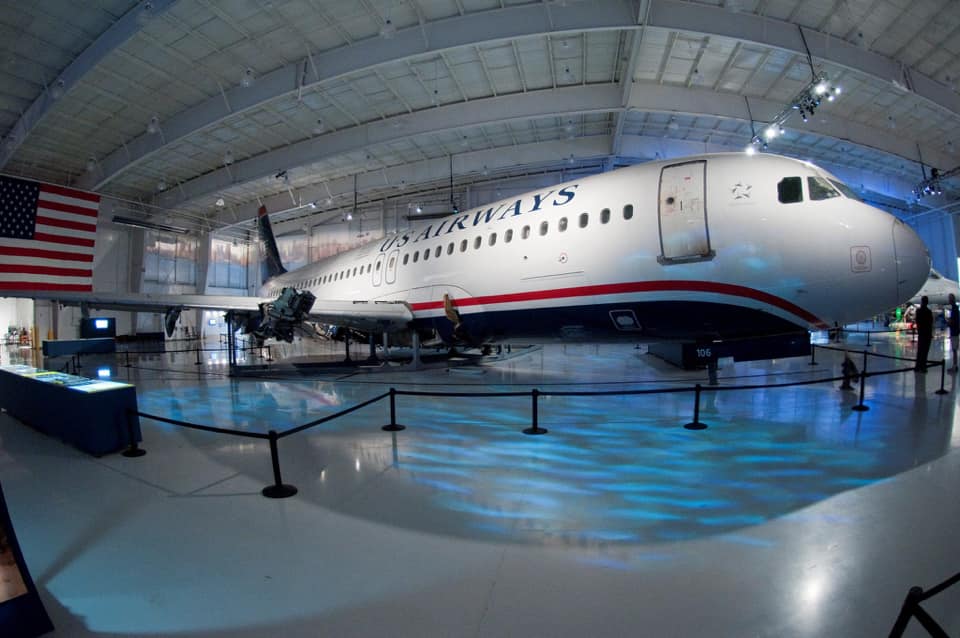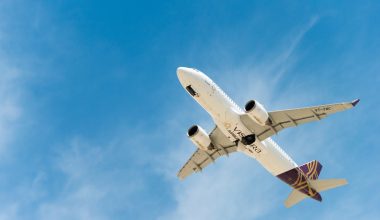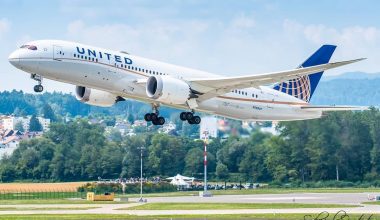Aircraft accidents don’t always result in human casualties. ‘Miracle on the Hudson’ flight is the proof of it. Despite losing engine power moments after leaving LaGuardia, US Airways Flight 1549 passengers survived the crash.
Landing in the river Hudson is not an everyday feat you will witness. However, on a breezy cold January day in 2009, several New Yorkers were astonished to see a passenger airplane flying low and consequently land in the River Hudson. One hundred fifty-five passengers onboard the aircraft were brought out safely to dry land following their harrowing ordeal.
Isn’t it risky just to land a big airplane on a single stretch of river just as a runway? A decade ago, the aviation industry was awestruck by US Airways Flight 1549 twin-engine failure that’s now named ‘Miracle on the Hudson.’

Rapid response, cognitive thinking, calm demeanor, and resilience of pilots saved all passengers on board this flight. US Airways Flight 1549 plane crash is indeed a miracle that brought highly improbable outcomes combined with well-timed decision-making and problem-solving under extreme pressure.
Background of this miraculous crash event
US Airways Flight 1549 was a regular flight scheduled for New York LaGuardia to Charlotte Douglas flying onwards to Seattle. The Airbus A320-214 aircraft that had two GE Aviation/Snecma designed CFM56-5B4/P turbofan engines were assigned to serve the flight. The plane was carrying 150 passengers along with three aircrews. Chesley Burnett ‘Sully’ Sullenberger III was the pilot in command of the US Airways Flight 1549 with the first officer Jeffrey Skiles.
The flight got clearance to take off from LaGuardia’s Runway 4 and soon became airborne as being at 700 feet and climbing. 2 minutes later, during climb out, the jet intersected a group of ‘primary target’ about 4.5 miles northwest of LaGuardia.
Also Read: Southwest prohibited lady travelers on board because of her outfit
The Airbus A320 struck a flock of Canada geese that obscured the pilot’s windscreen view. The air traffic controller approving the departure hadn’t noticed them on the radar screen. Then there was a thump, loud bangs, and flames from engines, followed by silence and the smell of fuel. Crippled by the bird strike, both engines lost their power, but the aircraft continued elevating for 19 more seconds. As the initial speed of the plane was starting to gain momentum, it suddenly plunged after the failure of engines. The in-charge of flight worked unto the engine restart procedure, but the jet began a glide descent at an airspeed of about 210 knots through 1650 feet.

About five minutes had passed after flight takeoff from LaGuardia when the plane lost thrust on both engines and splashed in the Hudson. On the harrowing ride to ditch in the Hudson, the plane passed over the George Washington Bridge at just 900 feet, coming terrifyingly near to the bridge. The narrow expanse of the Hudson River became the runway for captain ‘Sully.’ In fact, the pilot radioed a mayday call 22 seconds after the strike and got the initial direction to be back to runway 31 of LaGuardia. Unable to return there, the pilot asked to land at Teterboro Airport. Controllers gave permission for the pilot to land at Teterboro’s runway 31, but again the plane couldn’t take that as it would be too dangerous to attempt a landing there.
Safe ditching- Miracle on the Hudson River
The pilot informed people on board to brace for the impact as ninety seconds later, the jet descended in a controlled guide, ditched in the Hudson at 3:31 pm, splashing down midway between Manhattan and New Jersey. Sully glided the plane onto the frigid waters that had a hard impact, yet the plane remained afloat and miraculously intact. The unpowered ditching of the airplane was a ‘hard landing’ with ‘one impact and no bounce’ with a gradual deceleration. All of these happenings occurred in a blink of an eye that flight crew never threw the aircraft’s ‘ditch switch’ that closes the outflow valve and avionic ventilation ports below the aircraft’s float line.
The unpowered landing of the airplane over water is very dangerous as it compromises the aircraft’s aerodynamic efficiency and speed. Ditching is rare in commercial passenger travel as many aircraft don’t feature water landing. The situation on flight 1549 was so life-altering and scary, but thankfully none of the passengers and crew members lost their lives. Engine failure, freezing temperature, icy water, and other unfortunate chains of events somehow led to the successful, safe ditching; no wonder ‘Miracle on the Hudson’.

All 155 passengers and crew onboard scrambled out onto the wings and emergency slides. The aircraft had full life vest provision and detachable exit slides for extended over-water use. Flight attendants evacuated passengers onto the waterlogged wings of the bobbing jet through four mid-cabin emergency exits and ushered them into life jackets.
Rescue operations kicked in, with several boats heading straight out to assist. Two NY Waterway ferries instantly hastened to the scene. The emergency services, a flotilla of commuter ferries, divers started taking passengers aboard. Cold temperature, icy water, and giant chunks of ice forming around the plane made evacuation treacherous, but the evacuation turned festive with successful rescue by 3:55 pm, 24 minutes after the ditching, as all passengers had been offloaded and been brought to safety.
Captain Sullenberger walked the entire length of the sinking aircraft twice to ensure complete evacuation before exiting the flooded airplane.
Injuries despite the ‘miracle.’
Although no fatalities were reported on the ‘Miracle on the Hudson’ flight, one survivor sustained two broken legs resulting from a metal bar that pushed through the cabin floor. Minor injuries or hypothermia were evident for dozens of passengers. Twenty-four passengers and two rescuers received treatment at the hospital. One suffered eye damage from a fuel jet. A total of 95 minor and five serious injuries were reported following the crash.
Each passenger got $5000 checks as compensation for items left behind, a refund of their ticket prices, and an apology letter as their plane crash-landed in the Hudson River. Even in this survivable crash, passengers got all their luggage and items returned to them.
Many passengers gripped by shock and grief later experienced post-traumatic stress symptoms on the rough side.
Miracle on the Hudson- Choice or Necessity?
The National Transportation Safety Board initiated an investigation on the reasons behind the aircraft ditching. Was the landing across the river uncalled for or rather an option? NTSB used flight simulators to show the probability of making it back to LaGuardia airport. Only seven of thirteen simulations returned to LaGuardia successfully, and one simulation of two to Teterboro succeeded. However, the simulations didn’t account for the needed time for pilots to decide on a course of action. Any attempt to bring the plane to the airport risked the plausibility of crashing within a populated area resulting in the death of everyone on board.
After the Miracle on the Hudson, the NTSB board ultimately determined the probable cause of the accident to be the ingestion of large birds into each engine that caused the engine failure and ruled the decision of Sullenberger to be correct to deal with the situation.
Good decision-making, outstanding flight crew performance during the evacuation, the proximity of working vessels to the ditching site, and teamwork contributed to the live-saving operations despite the accident.
Safety improvements after the crash
Federal safety regulators recommended a Host of safety and technical improvements after the crash. Technical innovations on the aircraft to reduce bird strikes, testing engines to withstand bird strike, improved pilot training for water landings, redesigning one of the vertical beams on narrowbody airliners to intrude into the cabin in the event of ditching or gear-up landing, checklist for dual engine failure at low altitude are some of the recommendations and safety lessons revolving around preventing bird strikes and reducing damage.

Generation information on Accident aircraft Airbus A320
US Airways received the delivery of the accident airplane A320 on August 3, 1999. It had a total seating capacity of 12 first-class passengers and 138 economy-class passengers, accommodating five retractable flight attendant jumpseats. The plane had completed 25,241 total flight hours at the time of the crash.
Aircraft condition after crash-landing
After the crash, people performed the long work to secure the plane. Examining the dented jetliner, the aircraft’s skin was gone in places, the battered and twisted left engine was gone missing, organic matter and a single feather were found as evidence, and the right engine depicted soft body damage.

After eight days of struggle to find the wreckage, the engine was located on the river floor near the crash-landing site. After the damaged aircraft was retrieved from the river, it was then owned by the insurer AIG, transferred to Kearney, New Jersey, for the investigation, and put up for auction before finally being donated to the Carolinas Aviation Museum. The museum had initially requested for just a piece of the plane but received the bulk of it in June 2011. The aircraft is now at the display, where visitors can see it and experience the event before entering the storage.






